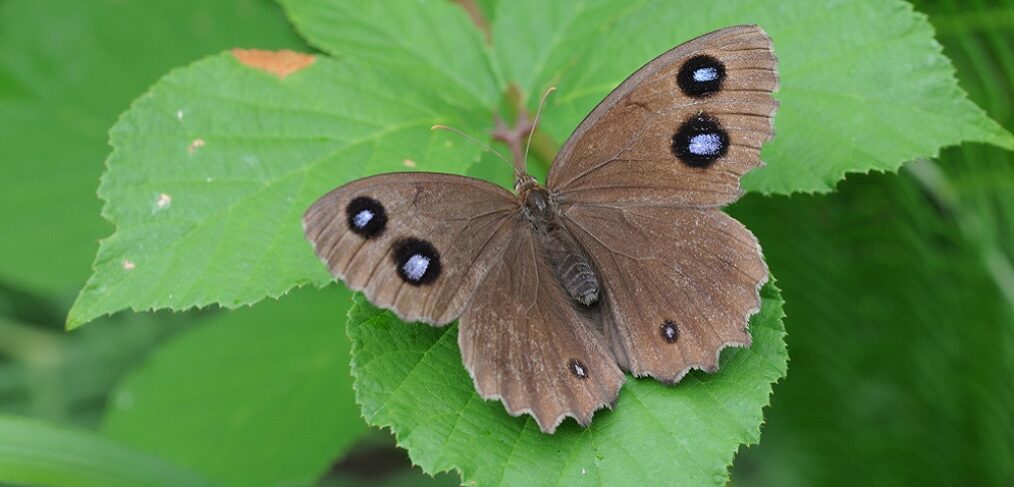
species of the week #69 – dryad
What do bright blue eyes, dreaming butterfly researchers and teenagers who prefer to live somewhere else have in common? This all describes characteristics of the butterfly called the Blue Core Eye. Its bright blue eye circles and elegant fluttering reminded the butterfly researcher Scopoli in 1763 of the dryads, the delicate forest fairies of Greek mythology, so he gave it the species name “dryas” thus.
| Distribution status | Extinct in Rhineland-Palatinate |
| Remaining deposits | Alpine foothills, Kyffhäuser, East Brandenburg |
| Last sightin in rhineland-palatinate | 1960 in the Palatinate Rhine plain |
| habitat | Pipegrass meadows |
| Threat | Loss of wet meadows and forest edges, too frequent and too early mowing |
Apart from their dark brown wings with blue eye spots, what is special about the blue-winged chickadee is its habitat requirements: they are so-called inhabitants of different biotopes. This means that they inhabit different biotopes in the various stages of development (egg, caterpillar, pupa, moth).
As a caterpillar, the Blue Core Eye likes to live on tall grasses on dry and semi-arid grasslands. As moths, however, they leave this habitat and seek out significantly wetter areas. They feel at home on wet meadows in fens and intermediate moors or forest clearings with grassy ground vegetation and are most likely to be seen there. In Germany, the Blue Coreye is still most frequently found on wet meadows, especially moor grass meadows, in the southern part of the Alpine foothills.
Pipegrass meadows are tall reed meadows. They thrive on nutrient-poor, loamy or anemic to peaty soils in which the groundwater rises almost to the surface. They have developed through extensive, late mowing to obtain bedding for livestock stables. These meadows are very sensitive to fertilisation, abandonment or change of management and drainage. Fertilisation of these areas by livestock or other nutrient inputs often results in a rapid decline of the bluegill population.
In the caterpillar stage, the moths often die due to too early or too frequent mowing of the areas. This can be remedied by one-off, late mowing dates. In exemplary areas, these are organised in a staggered manner by agriculture and nature conservation so that whole swathes of land are not mown in one day.
Politically necessary:
- Promotion of mosaic-like biotopes and agriculture
- Rewetting of wet meadows
- Extensive and coordinated mowing system
Click here for many more species of the week
photo: from Zeynel Cebeci – Eigenes Werk, CC BY-SA 4.0, https://commons.wikimedia.org/w/index.php?curid=37513906
